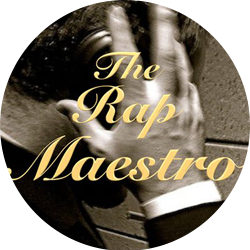One of the favorite classical pieces of very-contemporary music (the piece was written in 1976) is Henryk Górecki’s “Symphony No. 3”, subtitled “Symphony of Sorrowful Songs.” At first hearing, I was truly overwhelmed. The emotional power of the piece is undeniable. However, the song’s effect quickly wore off on me, and when that happens with a classical piece, all we are left with is the piece as it stands on its own as a testament to and interpretation of the rules of music. And when the technical construction of a piece is paper thin, no matter how strong it’s emotional impact is, the piece can easily be dismissed. Unfortunately, I believe that is the case with Górecki’s “Symphony of Sorrowful Songs.” The movement in question, which is the movement invariably referred to when people discuss the piece (and the movement which I will discuss here), is the 1st movement, titled “Lento – Sostenuto tranquillo ma cantabile”. From the wikipedia page of “Symphony No. 3”: Typically 27 minutes in duration, the first movement equals the combined length of the second and third movements,[10] and is based on a late-15th century lament of Mary from the Lysagora Songs collection of the Holy Cross Monastery (Św. Krzyż Monastery) in the Świętokrzyskie Mountains.”
You can here the first movement here: First Movement of Górecki’s “Symphony No. 3”
Now, as it turns out, I go on the site reddit.com pretty frequently. I am subscribed to the subreddit r/classical music, where people discuss…classical music. This piece is widely acclaimed by the community to be amazing/awesome/greatest-piece-of-all-time. And whenever it comes up in the discussion, I put my two cents in. Here is the general idea of what I have to say (I’m quoting directly):
“(I’m playing a little bit of devil’s advocate here)
The entire piece is
constructed around the entrance and exit of a single theme that is
turned into a canon. Every entrance of the theme in the canon, although
it occurs at a different pitch level (so although it begins in the
Ionian – major – mode, it next occurs in the Dorian mode, then in
Phrygian, then in Lydian, and so on…you can think of the theme being
the same every time, just starting on a different degree of the major
scale and changing the qualities of the intervals so that everything
stays within the same key), is exactly the same. If you listen to it for
the first time, after the first 5 minutes, you can guess exactly how
the rest of the piece is going to go. If it didn’t take Gorecki about
half an hour to compose this, we really all should be thankful that he
never fully returned to this style.
It’s just another instance of modern composers hiding the fact that
they don’t actually know anything about counterpoint, harmony, or how
musical voices move. They trick the ear with fancy textural effects that
draw the listener’s attention elsewhere. You see this all the time.
Eric Whitacre, anyone? All he does is fill out huge extended ninth or
eleventh chords throughout a whole choir, and throw a melody in on it.
If for anything, these men should be commended for making something out
of nothing, and not for any musical prowess that they supposedly
command.
Keeping the ear entertained is the easy thing to do. Our ears are
naturally interested in things; just listen to how we respond to the
simplest of musical gestures (a bass kick – snare combination, that
forms the backbeat for how many tens of thousands of songs in the pop
format?) What’s difficult is taking a tiny idea, and exploring it fully
so that the ear can trace a development throughout an entire piece.
That’s what real composers do.
And if you’d like an example of that, listen to the first movement from Ravel’s piano trio, Modere”
Now, someone rightly called me out with a good question:
“Do you really honestly believe that the value in a piece of music
lies in the composers ability to adroitly manipulate a tonal system in a
way such the the more complex the technique the better the piece? I can definitely appreciate the idea of technical proficiency and
‘problem solving’ in the compositional process, and I am absolutely
enthralled by many examples of this. But I cannot
accept the idea that other musics should be discounted in light of
this. There are example from the renaissance to minimalism to jazz to
Mozart that are fantastically simple, yet extraordinarily elegant and
beautiful.”
All good points. This is what I had to say in response:
“‘Do you really honestly believe that the value in a piece of music
lies in the composers ability to adroitly manipulate a tonal system in a
way such the the more complex the technique the better the piece?’
No…and yes. I think honestly, we need to ask more of composers.
This piece is (figuratively) nothing. The logical evolution of this kind
of composing is less and less until there is literally next to nothing
left to hear. It’s a dumbing down of what we come to expect from our
music. Pop music, directly relate-able to this piece, is a perfect
example. Everything is in 4/4, with 4 (or some multiple thereof) bar
phrases, with some bass-kick pattern, and a
verse/chorus/verse/chorus/bridge/chorus structural form. Furthermore,
any supposable ingenuity in harmony (counterpoint is literally
non-existent) is completely removed, as everything moves in block chords
(no matter the instrument.) This is the dumbing-down I’m trying to
describe: any rules you had with how voices move are completely gone.
Thus, voices just jump from one place to another. Thus, the chord
progressions in every song are just repeated from one to the next (the
specific progression itself in this discussion is of little moment.)
It just doesn’t really ask very much of either the listener or the
composer. It’s not that listening to music is supposed to be a graded
task or anything, it’s just that when we’re asked to put more of
ourselves into listening to a piece of music, into figuring out exactly
what’s going on, that’s when we get more out of it. Honestly, if you’ve
heard other classical music (such as the Ravel piece I posted), or any
musical piece where development is the name of the game (the true
test of a composer), I don’t get how you could find this piece
compelling at all, being as it is 30 minutes long. As I’ve said before,
you hear the first 5 minutes, you know what the rest will be; all the
rest is flashy textural effects. Where will this train of reduction
stop? In this piece you’ve removed any development (technically speaking
or not) or progression of melody, rhythm, harmony, counterpoint, AND
orchestration. Seriously, what else is there?”
And I believe the answer is, unfortunately, nothing.
Again, I can’t deny the emotional impact of this piece. But once that wears off, there is nothing to commit to in the music.
Just some thoughts.


 Join the weekly RapAnalysis newsletter at
Join the weekly RapAnalysis newsletter at